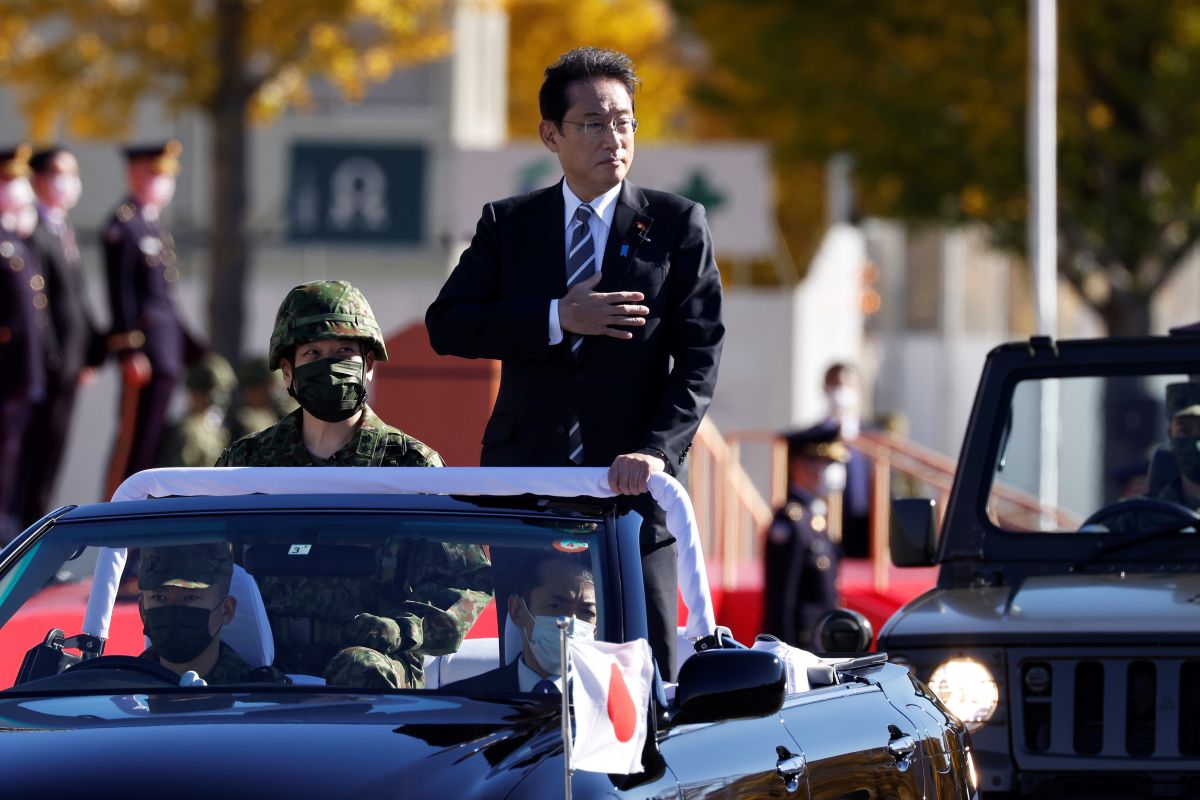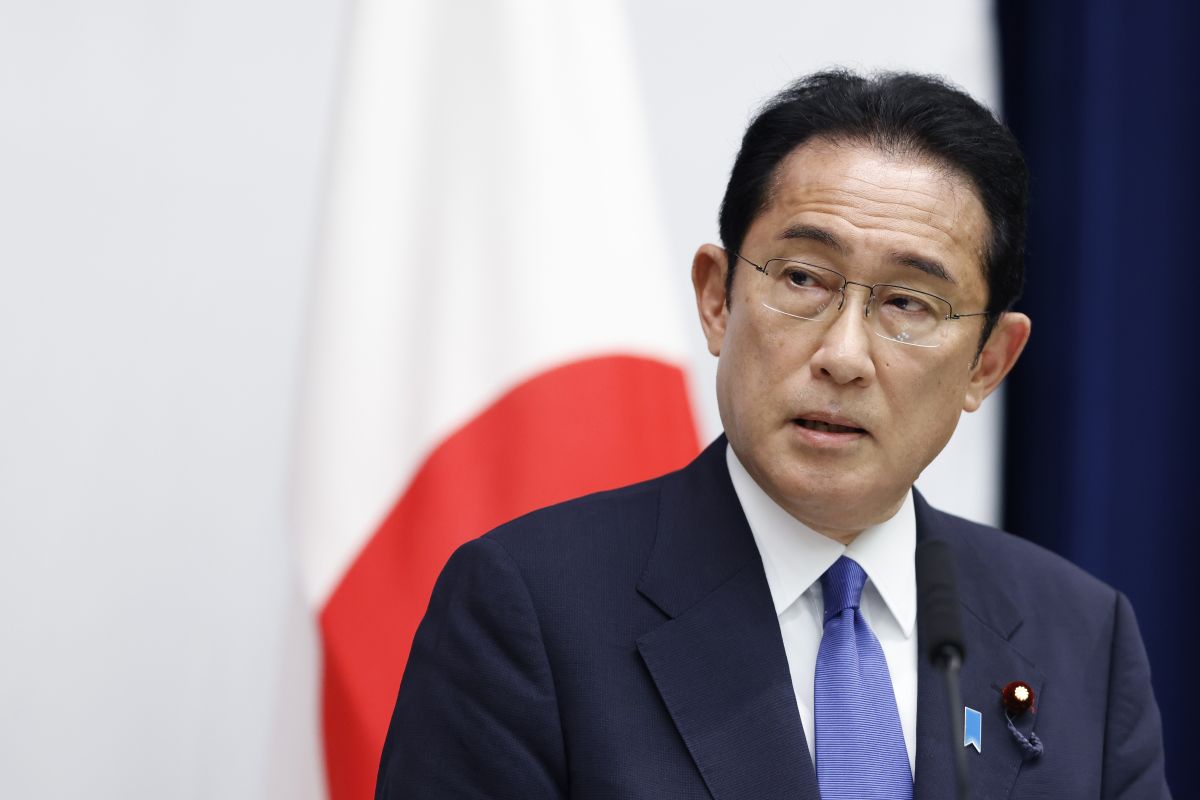Evolution, not Revolution: Japan Revises Security Policy
In December last year, the government of Kishida Fumio adopted three documents adapting Japan’s security policy to the deteriorating international situation. Its security and national defence strategies highlight challenges from China, Russia, and North Korea, as well as an increase in non-military threats. A third document specifies the need for a record increase in defence spending. Japan’s readiness to deepen cooperation with the U.S. and European countries and its criticism in its assessment of Russia’s aggression against Ukraine create the conditions for the further development of Japan’s cooperation with NATO and the Polish-Japanese dialogue on security.
_Easy-Resize.com.jpg) BLAIR GABLE / Reuters / Forum
BLAIR GABLE / Reuters / Forum
The documents, adopted on 16 December 2022, outline the shape of Japan’s security and defence policy in the coming years. Of key importance is the National Security Strategy (NSS), which contains the main guidelines for state activities to ensure national security. The adopted document is the first revision to the NSS since its release in December 2013. The National Defence Strategy (NDS, formerly known as the National Defence Programme Guidelines) develops the assumptions of the NSS in relation to defence policy and the tasks of the Japan Self-Defence Forces. In turn, the Defence Build-up Programme (DBP, known earlier as the Medium-Term Defence Programme) outlines defence spending for the next five years.
Challenges and Threats
According to the diagnosis in the national security and defence strategies, the pillars of the international order on which Japan and other countries sharing similar values, such as freedom, democracy, respect for human rights and the rule of law, have built their security and prosperity, are under threat. As a result, Japan’s security environment is the most severe and complex since the end of World War II.
This situation, the documents state, results from the actions of “some nations that do not share universal values”, referencing by name China, Russia, and North Korea. China is described as “the most serious challenge in Japan’s post-war history”, while in the 2013 NSS, Chinese policy was only “an issue of concern”. The Japanese authorities consider China’s actions in the East and South China Seas and in the Taiwan Strait, which are an attempt to unilaterally change the status quo by force, to be particularly dangerous. The strategies also devote a lot of space to Russia (treated earlier as a “partner”), whose aggression against Ukraine violates the basic principles of the international order and increases the risk of conflict in the Indo-Pacific, especially in East Asia. They also point to Russia’s increased military activity near Japan and the deepening of Sino-Russian cooperation. Japan considers North Korea’s nuclear and missile arsenal, which is part of a regional arms race, to be a growing and imminent threat.
The documents also emphasise the importance of non-military issues, especially economic ones, for Japan’s national security. This fits in with the growing interest of the Japanese authorities in economic security, which has been noticeable for years. The intensification of activities below the threshold of war, such as cyberattacks on critical infrastructure or disinformation, are also pointed out in the documents.
Means and Methods
To ensure its security, Japan intends to use all the instruments of its power: diplomatic, defence, economic, technological, and intelligence. Although diplomatic activity will remain the foundation, the evolution of challenges and threats leads the Japanese authorities to consider it necessary to develop military capabilities adequate to the expansion of the potentials of other countries, especially in the region.
The NDS lists seven areas where increasing the capability of the Self-Defence Forces is necessary. The most important change is the announcement of the strengthening of missile forces capable of carrying out counterattacks against targets located on the territory of an aggressor state (implicitly China or North Korea). To this end, Japan intends to increase the range of its Type 12 missiles (up to 1,500 km), develop its own long-range missiles (up to 3,000 km), and purchase several hundred Tomahawk cruise missiles from the U.S. The Japanese authorities stipulate that counterattacks would only occur in response to an attack and to prevent further ones, and the use of force would be kept to a minimum. In addition, the NDS indicates the need to, among others, develop an integrated anti-aircraft and anti-missile defence system, expansion of capabilities to fight in cyberspace and outer space, increase the number of drones and building up the Self-Defence Forces’ facilities, including ammunition, fuel, and equipment stocks.
These tasks are to be accomplished by increasing defence spending, which, according to the DBP, will amount to $320 billion in 2023-2027, or 56% more than in 2019-2023. As a result, in 2027, Japan is to spend 2% of GDP on defence (following the example of the goal set for NATO countries), departing from the usual limit of 1%. The development of its own defence industry is to be supported by deepening cooperation with the civil sector, allowing for more effective use of technological potential for defence purposes, especially in cyberspace and outer space.
To improve its security, Japan also intends to co-shape the international order based on the vision of a free and open Indo-Pacific. To this end, Japan will use cooperation formats, both bilateral (led by the alliance with the U.S.) and multilateral (for example, within the Quad and in contacts with NATO and the EU), that include like-minded partners, such as Australia, Canada, Czechia, France, Germany, India, Italy, New Zealand, Poland, South Korea, the UK, and Southeast Asian countries. The cooperation is to extend beyond the defence dimension (e.g., exercises, research and development cooperation) and also include co-shaping an “open and stable” economic order. This is to be done through regional cooperation mechanisms such as the Comprehensive and Progressive Trans-Pacific Partnership (CPTPP), the Indo-Pacific Economic Framework (IPEF), and the Regional Comprehensive Economic Partnership (RCEP). The latter example suggests the willingness to include China in regional cooperation as well.
Conclusions and Perspectives
The new strategic documents are culmination of Japan’s long-term reflection on the consequences of changes in the security environment that are unfavourable from its point of view, initiated by the adoption of the strategy by Abe Shinzo’s government in 2013. The Russian aggression against Ukraine, Chinese actions in the Taiwan Strait, and the development of North Korea’s missile potential confirm the diagnosis. The evolutionary nature of the changes in Japan’s security policy is also evidenced by the consistent increase in military spending over the last 11 years. The documents adopted in December last year initiate a process of changes lasting several years, thanks to which, by 2027, Japan is to acquire capabilities allowing it to take the primary responsibility for its own security, including deterring or repelling a possible invasion.
The expanded potential is also intended to increase Japan’s contribution to the alliance with the U.S., which is in the latter’s interest of strengthening the defence capabilities of its allies and deterring China. Japan and the U.S. similarly regard China as a “challenge” rather than a “threat”, although the Japanese approach seems more conciliatory. This is evidenced by the readiness to cooperate with China in the areas of the economy and people-to-people contacts, as expressed in the strategies. The relatively positive reaction of the South Korean authorities to the changes in Japan’s security policy offers an opportunity to improve bilateral relations, marked by historical and territorial disputes, and to revive trilateral cooperation with the U.S. The unequivocal criticism of the documents by China and Russia, regarding them as a “step towards militarisation”, suggests that Japan’s relations with both countries will remain tense.
The expansion of military capabilities does not change the defensive nature of Japan’s security policy and is in line with the constitution and international law. The internal discussion around Japan’s security policy concerns adaptation to the international situation, not legal issues. Although the majority of the population (even about 70%) supports strengthening the country’s defence potential, financing defence spending may prove to be a challenge due to the reluctance of the Japanese to increase the tax burden and the risk of an increase in public debt.
The diagnosis of the international situation and the chosen direction of security policy make Japan an increasingly promising partner in cooperation with NATO countries. This is visible, for example, in the cooperation of defence industries, such as the announcement of December 2022 of a Japanese-British-Italian project to develop a next-generation fighter by 2035. The changes in the security policy also create the basis for deepening cooperation between Japan and Poland, which was mentioned in the NDS as a valuable partner in combating threats in cyberspace, disinformation, and hybrid activities.





